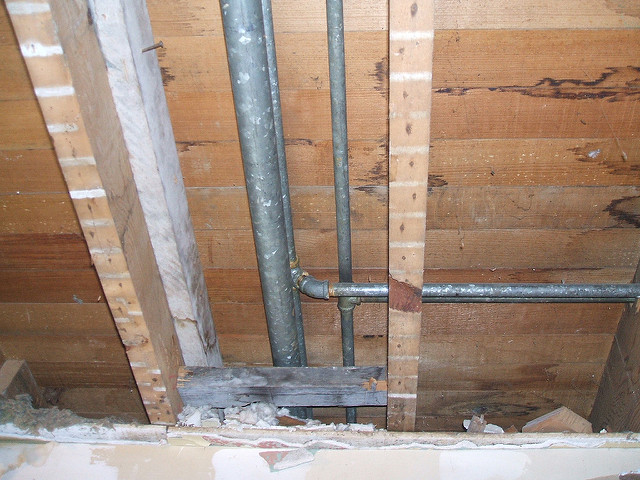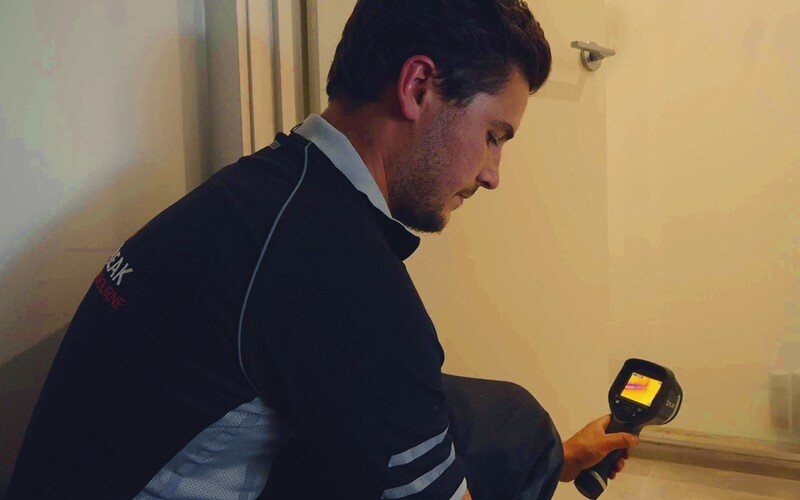6 Tested Strategies for Detecting Hidden Water Line Leaks
6 Tested Strategies for Detecting Hidden Water Line Leaks
Blog Article
What're your insights and beliefs on Locating water leaks?

Early detection of leaking water lines can alleviate a possible disaster. Some tiny water leakages might not be visible.
1. Take A Look At the Water Meter
Inspecting it is a proven way that aids you uncover leaks. If it moves, that indicates a fast-moving leakage. This suggests you might have a sluggish leakage that might also be below ground.
2. Examine Water Intake
Evaluate your water bills and track your water usage. As the one paying it, you need to notice if there are any discrepancies. If you find sudden changes, in spite of your consumption being the same, it indicates that you have leaks in your plumbing system. Keep in mind, your water bill should drop under the exact same variety every month. An abrupt spike in your expense suggests a fast-moving leakage.
A consistent increase every month, even with the very same routines, shows you have a slow-moving leak that's additionally slowly escalating. Call a plumber to extensively inspect your residential property, especially if you really feel a warm location on your floor with piping underneath.
3. Do a Food Coloring Examination
When it comes to water consumption, 30% comes from bathrooms. If the shade somehow infiltrates your bowl throughout that time without flushing, there's a leakage in between the container and bowl.
4. Asses Outside Lines
Don't fail to remember to examine your exterior water lines also. Test spigots by connecting a yard pipe. Ought to water seep out of the link, you have a loosened rubber gasket. Change this and make sure all links are limited. It will certainly assist obtain it properly checked out as well as kept yearly if you've got a lawn sprinkler system. One small leakage can waste tons of water and spike your water costs.
5. Check as well as Evaluate the Circumstance
Homeowners ought to make it a routine to inspect under the sink counters and even inside closets for any kind of bad odor or mold and mildew development. These 2 warnings suggest a leakage so punctual interest is needed. Doing routine assessments, even bi-annually, can save you from a significant trouble.
Examine for discolorations and also compromising as many pipes as well as appliances have a life expectancy. If you think dripping water lines in your plumbing system, don't wait for it to escalate.
Early discovery of dripping water lines can mitigate a possible disaster. Some small water leakages may not be noticeable. Checking it is a guaranteed means that helps you find leakages. One little leak can lose loads of water and also spike your water costs.
If you suspect leaking water lines in your plumbing system, do not wait for it to rise.
How to Know If Your Home Has a Hidden Leak
Water Meter Reveals Inexplicable Water Usage
If you’d like to test whether or not there’s a leak somewhere in your home, you can do this using your water meter. Here is how to conduct the test:
Don’t use any water in your home for at least 30 minutes; this also means not turning on faucets or water-using appliances.
Go outside, and check your water meter for activity.
If your water meter shows that there was activity, even though no one was using any water, this proves that there is a leak in your home.Visible Mold or Mildew Growth
Leaks behind walls create moist, dark environments that allow mold and mildew to grow and thrive. Eventually, you might see mold growth forming on the wall closest to a hidden leak.
If mold is growing in an area that receives a high amount of moisture, such as a bathroom, it may simply be an indication that better ventilation is needed. However, if you see mold growth on a wall or the ceiling in an area where you would not expect, you probably have a hidden leak.
Musty, Mildew Odor
Sometimes you might not be able to see the mold or mildew that is growing as a result of a leak. However, the smell can give the problem away just as easily. If you catch a whiff of something musty, there’s a good chance that old water is collecting somewhere in your home that you can’t see.
Stained/Warped Walls, Ceilings, or Floors
When your home soaks up water, a variety of red flags can become visible, including ceiling stains, bubbling drywall, warped walls, and sagging floors. While these issues can be caused by excess humidity, they can also be signs that a pipe or plumbing connection has started leaking behind your walls.
Inexplicably High Water Bill
After a while, you get a general sense for what your water bill should be. If you own a pool or sprinkler system, your bill will tend to be higher during summer. However, if you receive a water bill that seems especially high, and you can’t figure out what caused it, then you may have a hidden leak somewhere that’s increasing your bill.
https://www.plumbingjoint.com/blog/2019/july/how-to-know-if-your-home-has-a-hidden-leak/

As a serious reader on Locating water leaks, I imagined sharing that chunk was a smart idea. Do you know about somebody else who is fascinated about Locating water leaks? Do not hesitate to share it. Thanks so much for going through it.
Emergency leaks? Professional help here. Report this page